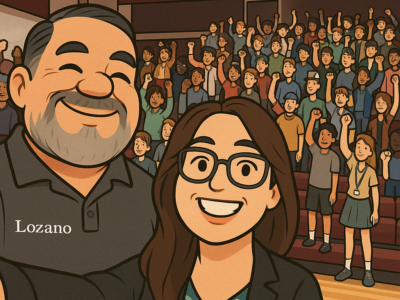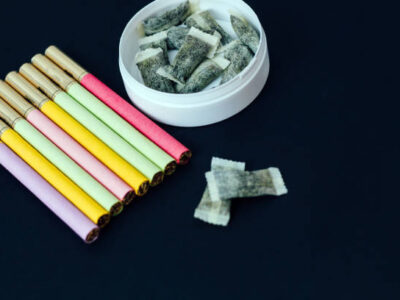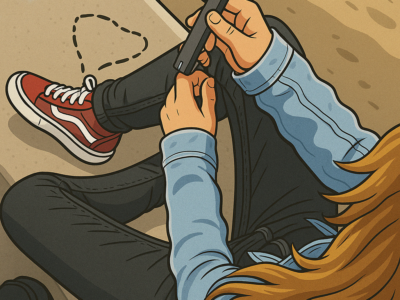(Oregon Juvenile Department Directors Association)
Canyonville, OR
September 16, 2019
Keynote notes
Introduction: Ray’s family history made him ask questions about use and addiction, which led to life-long search for answers.
Marijuana
History
1969
Weed had ~7% THC
2019
- Weed (that is smoked) ~ 21% THC
- Edibles (brownies, gummies, etc.) ~85% THC
- Young people are smoking “dabs” or “wax” ~98% THC
Marijuana has been on planet longer than humans have used fire
Found in Egyptian pyramids
Ancient Romans used cannabis and hemp
Military used hemp for raincoats, arrows, bows (sinew and hemp gave farther pull), and sails on ships.
White house – found in fields around White House when it was being built.
Because it’s been around so long, it gives the illusion that it’s safe
Marijuana Facts
- 488 chemicals
- Add heat: jumps up to 2,000 chemicals
- 66 of these chemicals go straight to the brain
- The 9th chemical is THC; Delta-9-tetrahydrocannabinol
- The 8th chemical is CBD; Cannabidiol. This is non-psychoactive (doesn’t produce a “high”)
- THC is used by naturally by the marijuana plant to repel animals/insects.
- Female plants produce THC. Male plant is just “hanging around to reproduce.”
- People discovered in 1970’s how to increase THC by isolating female plants.
Impact on Brain
NOTE:
- Two types of website (pro-marijuana and anti-marijuana) e.g. NORML vs. CASA
- Ray Lozano/Prevention Plus information comes from scientific, academic journals that are objective
- Most of research comes out of Europe and Australia because of how marijuana is scheduled in US.
- THC takes five seconds penetrates lining of lungs and goes into blood stream
- THC looks for fat cells to travel throughout body
- Our brains have large concentration of fat cells
- Once it arrives in brain, it stays there
- Youth who smoke weed can’t remember things well
- Brain is like a wall with doors labeled with information
- Information gets filed behind appropriate door when brain is working correctly
- Example of how brain files information:
- If I said the word, “elephant” what do you see?
- Do you see: photo, drawing, video, letters spelling “elephant”?
- That’s how the brain is supposed to work
- Here’s what happens to kids who smoke weed, study, smoke weed, study, smoke weed…information gets filed incorrectly.
- Brain doesn’t have trouble recording information but trouble retrieving information
- Another way it affects brain is related to stunted emotional growthExample of 4-year-olds:They have lots of emotion; little intelligenceAdults response to disappointment They have more intelligence; less emotion21-yrs-old young women fully developed23-yrs-old young men fully developedWhen youth smoke weed, they’re hijacking the development and continue having more emotion than intelligence
- First impact on use is that using marijuana causes them to be effective liars (because of what it does to their brain).
- Example: On the T.V. show COPS, officers will ask, “Who’s weed is this?” They always say, “My friend’s”.
- Here’s how it works inside the brain:
- If I ask you a question that’s true, your brain goes to retrieve memory.
- If I ask you a question that’s not true, your brain goes to imagination. Brain searches your memories. It doesn’t find it, so it switches over to imagination.
- When a young person comes home intoxicated, to avoid getting into trouble, the brain causes them to lie.
- No sense of time or urgency
- If they have 5-minute passing period, they’ll talk to friends 4 minutes and stroll to class.
- Short attention span
- Volume level is high in homes with high use (You’ll see this in in-home visits)
- Great documentary on the importance of silence and the impact of too much noise on our immune system called “In Pursuit of Silence”
- Youth who use marijuana don’t know what to do with silence
- Example of probation kids who couldn’t stay quiet more than 40 seconds
- Result is anger (like “hangry” x 1,000)
- Saw this with probation kids who started getting angry at one another.
- When kids who miss their “weed time,” they start to get angry.
- Association with violence. There’s a report where they’re correlating the increase of violence and weed.
- Shooting during Batman movie, shooter had a high level of THC
- Bombing in Paris-Bombers had a high level of THC
- Colorado is seeing a lot of discipline problems with kids.
- Difference between kids who smoke vs. those who don’t smoke:
- Example: If you ask for no cell phones at table. Kids who don’t use will still feel connected vs. those who use won’t feel connected.
- They feel isolated and alone and put in a spot where no one else is.
- Marijuana opens doors: Paranoia, schizophrenia, depression, even suicide
How to interact with youth who use
- When you discipline kids, make sure they know they’re still connected to you
- What is biggest reason kids smoke weed? Do you think: Peer pressure, to be cool, friends are doing it, it’s available?
- Answer: Boredom
- When babies are born, have two fears:
- Fear of being left alone and fear of falling
- Fear of being left alone
- Before “Stanford experiment,” researchers were allowed to do research that harmed humans
- 1957 orphan experiment. No affection; holding, talking. They were only allowed basic functions only.
- Orphans had trouble making connections. Out of 6 kids, 2 committed suicide, 1 killed someone else.
- Before “Stanford experiment,” researchers were allowed to do research that harmed humans
- Fear of falling
- Who helps with develop overcoming fear of falling? Mom or dad?
- Example: Dads throw kids up in the air and catch them.
- Brain is testing theory, “What’s gonna happen?” “What’s gonna happen?” When it’s reinforced that you won’t die, brain sticks with the theory that you won’t die and the kids says, “again, again!”
- What happens if you throw kid up and don’t catch it?
- Kid doesn’t say “again”. He says, “I’m never doing that again.”
- If you have a good outcome, brain says “again”. If it’s a bad outcome, brain says, “never again”.
- Example: If you have a food or experience with bad outcome, you won’t do it again.
- Who helps with develop overcoming fear of falling? Mom or dad?
- Just like the fear of falling, you gotta get boredom right the first time.
- If you circumvent boredom with drugs like marijuana, the brain won’t know how to deal with boredom.
- Boredom
- For 15-16 yr. old kid boredom is new
- How many adults would LOVE boredom?
- As adult if you had one hour, what could you do?
- What could a kid learn at the mall for one hour with $20
- $20 doesn’t go far – $ management
- Time management
- Dress for weather
- How to use coupons
- Social skills with friends
- Problem with weed is that if kid smokes weed when they’re bored, they don’t learn things they need to learn
- This is the beginning of addiction. When regular “life” happens, if youth have used marijuana to circumvent boredom, they don’t have perseverance. Examples: Mom wants kid to do chores, teacher wants me to do homework and study for test, boss wants me to show up for work at 7, get ½ hour lunch and get off at 4?
- No way. It’s easier to smoke weed.
- If you’re working with youth:
- When disciplining, reinforce your relationship
- When they’re bored, they’re gonna default to marijuana, because it’s easiest thing. They need help learning options.
- They might have trouble remembering things.
- Boredom
Addiction 101
About the brain
Two brain facts:
- Brain loves fun
- Brain is unbelievably lazy
Once brain finds answers, it continually does it over and over
Example:
Everyone in this room has about 11 meals we rotate through over and over. Many of us only have 8. At the grocery store, we buy same things. We go to restaurants and say, “I’m gonna try something different” but we don’t.
- Brain doesn’t know what to do with pain.
What happens is that it works it and works it and works it. Because it doesn’t know what to do with it.
If the hotel clerk said something that you questioned later, you’d walk away and your brain chews on it. You’d have a whole picture built up. This is why journaling so important. Helps you process.
If at end of presentation 98% of people praise speaker, but one person doesn’t like it, Ray would focus on the one (because it was painful).
Kids use drugs to get rid of painful event.
- Brain loves easy.
He asks youth:
How many love video games, movies, texting?
How many love homework?
- Inside brain has big huge button that says, “Reward”
Everything we do typically has to push the “reward” button.
Example: When you eat lunch, your brain says, “I get what I want first” and then I’ll divvy it up to the rest of the body.”
Example: Picking up dog droppings
Kids don’t LOVE picking up after the dog. It has to find a reason (money)
Kids don’t go over to friends’ house and pick up after their dog.
Basic Components of Addiction
If you’ve ever tried to lose weight you might recognize this pattern:
- Binge eating weekend
- Resolved to lose weight.
- Good for first week – lose a pound
- Good for second week – lose another pound
- Good for third week – up another pound so we give up
If your brain got a reward every time, you would continue
- Euphoric recall protects us
If alcoholic driving under the influence, crashes into a tree, if you ask them at the moment, “Should you stop drinking?”
Two weeks later you ask. “Nah, if that tree wasn’t there…” or some other excuse.
- Confirmation bias
- Trouble saying “I’m wrong” or “I’m sorry”
Example:
If a person sees a “Big Foot” at 2:00 a.m.
They won’t be sure if they really saw it or not.
They go home and research it and sees all a lot of information.
They start going to “Big Foot” support group. It reinforces their belief.
Same thing with weed.
People try marijuana and think, “That made me feel good”
Next thing they’re hanging out with support system
Looking at websites that say, “Weed is great”!
If we came against your religious belief, you’d fight it.
Same thing with kids and their drug of choice
Reward System
If a child walks on to high school campus and is greeted at front gate, it hits “reward” button in brain.
Teacher smiles at them. Gets test result; “Reward”. Parents put positive test results on the fridge; more “Rewards”.
For ease of reference, I’ll call this brain “reward” as a “chicken nugget.” They’re made of adrenaline, endorphins, and nor-epinephrine.
Brain is like a marketplace where all the booths use different currencies; pesos, rubles, yen, etc. Marijuana is counterfeit currency. Extracts things from brain. But when it doesn’t get currency, doesn’t know
Two primary systems in body:
- Survive
- Make more
Survive
We love stories of survival:
- Guy with cancer who beats odds
- Inner city team who beats big city team with better equipment
- David and Goliath
Favorite movies are usually about survival.
“Make More”
Example of how deep the need for is to, “Make more”:
Show: National Geographic – Brothers of Serengeti
2 lion cubs growing up together. Only time they weren’t brothers was when it was time for mate.
Lunch time today, you’ll eat, share stories, enjoy company. Survival and food.
It will hit reward button 200 times
Mouse cage experiment
Took a cage 10 ft. long, 2 ft. wide.
1st food staging area
2-9 foot mouse utopia.
Last foot everything mouse might want to eat.
Took mice and gave them a dopamine blocker. After two weeks they died of starvation with food in the cage.
Making more – hits button 400 times
Heroin or meth – hits button 900 times. Hijacks. Accepts it in all of the marketplace.
This is where you can determine where in addiction.
Rewires system. Brain will look for easiest way.
If I offer you $900 in one hand and $400, you’ll choose the $900 every time.
Example of Ray’s sister:
He tried information. “If you don’t stop using drugs you will…(because, because, because….)”
Question from audience-“How does marijuana fit on this spectrum?”
Answer-It’s related to the “half-life” of marijuana. If an alcoholic stops drinking and immediately feels pain and full-life 24 hours. Half-life feeling it after 12 hours.
Marijuana stays in system 30 days. If user stops using, the half-life is 15 days. Because they can go a full two weeks without using, they feel it doesn’t qualify as “addiction.” But, often, after two weeks they go back to smoking.
Importance of Having a Sense of Safety/Belonging
Game of tag, when Ray would tag home base, a chemical reaction that said to his brain, “I belong here. I’m going to be here. Whoever is after me can’t get me here.”
If you’re working with youth, or are a parent, you have to have a place that is “safe”. This is where I’m going to survive.” If they don’t have that, they’ll go out and find it.
It’s important to have loving rules.
CASA says one of detrimental things we do is we say, “clean your room” and we answer, “because I’m the dad.” We think they’re challenging our authority. But they only ask because they want to know what reason is.
How to Talk to Addicted Individuals
Intelligence hates emotion. Emotion hates intelligence. The more they talk to each other; they start to get mad at one another. Two foreign languages.
Example of neighbor whose dog dies:
Two potential responses to distraught neighbor whose dog has died:
- PowerPoint presentation facts
- Most dogs die of cancer, but yours didn’t
- Dogs live to 10 but yours lasted to 12
- Most golden labs die of hip dysplasia but yours didn’t have it
Neighbor is coming with emotion and this response is coming from intellect/information. It doesn’t work.
- Emotion and then intellect
- Give her a hug
- Let her cry it out
- “This is terrible. But you know what’s cool?…”Then, give information
- When speaking with addicted individuals, it’s important to make an emotional connection first
- Emotional language asks questions. Doesn’t really look for information.
- Whoever asks the question drives the conversation.
Example of questions:
- “Remember when we would hang out before you started using?” I miss that.
- “Tell me about meth, is your life better or worse now?”
- “Tell me about weed? What do you like about it?” (don’t judge response. Use it to ask more questions about if it’s benefitting their life)
- “What’s your (family, work, friend) situation like?”
Example of program at Loma Linda University Medical Center program
Example of Riverside Probation revamping (cookie stories)
Instructed probation officers to “Smile and use their name”
Cookie story:
Found out that the students attending the probation meetings were encountering various “pain points” before they even got into class.
- Parents dropping off kids hollering, “Get in there! You’re late”
- “Mark” at security booth would holler at the kids and say, “Look at what time it is; get in there!”
- Lobby with bullet-proof glass with “Martha”, two weeks from retirement saying, “You’re running late, get in there”!
- x-ray (you’re running late, get in there)
- probation officer would holler at them
Is this kid set up to succeed? No.
Ray bought cookies, took them to everyone at the various points and he said, “Smile, eat your cookie and point”
After a while, when he tried handing out cookies the security booth officer said he didn’t want it because he “got it”.
Of the 156 students who went through their program, they directly connected 13 kids on a path to go into law enforcement and eight kids towards medical professions.
Vaping
Main chemical in e-cigarettes is nicotine.
Another place to find nicotine in the home (outside tobacco products) is in bug spray. The ingredients on a can of Raid will have ingredients that start with nic or end with tine.
Nicotine “separates out everything.”
In bugs, nicotine separates the signals so body parts can’t speak to one another (leading to death)
Nicotine “separating out” is what causes the addiction. It doesn’t allow a person to “stop” using products with nicotine.
How:
Brain has a “Go” button and “stop” button just behind and to the left of the center of one’s forehead.
Example of being scared by someone. When someone scares you, however you react (Reactions: Screamers, runners, punchers) it hits your “Go” button and hopefully you’re able to hit the “Stop” button (not punching your kid for example).
Nicotine doesn’t allow a signal to be sent to “stop” button. This causes the addiction because it doesn’t allow a person to stop (smoking, vaping, etc.)
Number of smokers by generation:
In 80’s = 17%
Millennials about 1%
Generation “Z” is on track to smoke only .05%
Tobacco companies know this. So, they’re working hard to get teens addicted to vapes.
In 80’s took 3 cigarettes they had an addiction
With vapes it’s about 3 days they’ve got an addiction
Vape companies say that they’re targeting their products to adults to help them stop smoking. But one of the easiest ways to know this isn’t true is to look at the wild names. These names of vapes are not targeted towards adults: Unicorn farts, brain freeze, sugar booger.
When this generation graduates high school, they’ll have highest rate of STDs like HPV because they’re sharing vapes.
If you are interested in having Ray Lozano speak, complete the following information


